Think of Barcelona and what pops into your head? Unless you’re going to play awkward, the chances are it will be FC Barcelona and Antoní Gaudí, or a building designed by the revered Catalan architect at least. But Gaudí wasn’t the only architect responsible for Barcelona’s flamboyant good looks.
Modernisme, Modernist, Art Nouveau, call it whatever term you prefer, is as synonymous with Barcelona as the beautiful game. Even those who walk with shoulders hunched and eyes firmly fixed downwards are unlikely to be able to stroll through Barcelona’s ornate streets without being exposed to architectural flights of fancy. The streets around the Cuitat Vella and beyond are filled with fairytale-esque wonders that will have you pencilling in a re-read of Carlos Ruiz Zafón’s Shadow of the Wind… after you’ve explored the Modernisme wonders of the city first.
Plaça Reial

A good place to start, although not so much a centre of Modernisme apart from Gaudí’s extravagant street lamps. This impressive porticoed plaza linking La Rambla with Barri Gótic is a hive of activity and filled with restaurants, bars and street performers. It’s an excellent open air music venue and a prime people watching location. Anyone who has any doubts about the power of travel guidebook recommendations should ask a local why one restaurant in particular enjoys a permanent queue outside.
Gran Teatre del Liceu
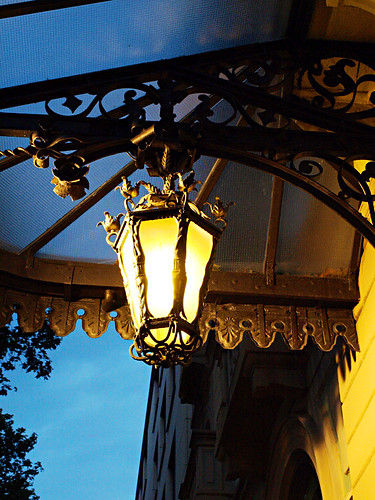
The ‘cursed’ opera house on La Rambla is in existence thanks to members of a National Militia organisation who also had liberal and cultural leanings. Funded by the sale of private shares in the theatre, it was completed in 1847 and was unusual in that it didn’t have a royal box (no royal contributions = no royal box). Why cursed? It was ravaged by fire in 1861 and again in 1994 and also bombed by an anarchist in 1893.
La Rambla, 51-59; +34 93 485 99 00; www.liceubarcelona.cat
Hotel España
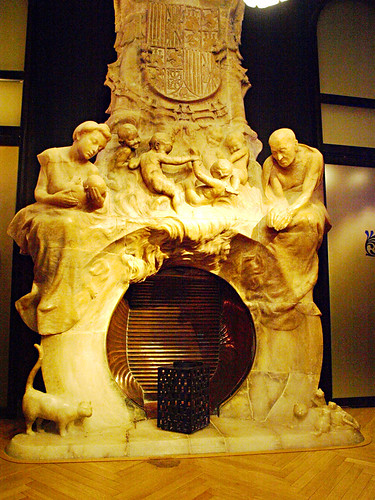
Originally opened as a boarding house called La Fonda de España in 1859, the Hotel España is as much a Modernisme museum as a hotel. Haunt of the bourgeoisie, the extravagant works of architect Lluis Domenéch i Montaner, artist Ramón Casas (Salón de la Sirenas) and sculptor Eusebi Arnau (a 5 metre high alabaster fireplace in the bar) look almost as fresh as the day they were created. The hotel clearly still attracts artists, the Fonda España restaurant is managed by a certain Martín Berasategui.
Carrer Sant Pau, 9-11; +34 93 550 00 00; www.hotelespanya.com
La Boqueria

Barcelona boasts 40 fresh food markets but all are overshadowed by the famous La Boqueria, named the best market in the world in 2005. There’s been a market in the area since the end of the 13th century when the city of Barcelona was too small to accommodate a market within its walls, so it lay outside the city gates at Pla de la Boqueria. La Boqueria boasts another name, San Josep, after the convent that the market replaced in the 19th century. The metal roof was added in 1914 and today it is a Mecca for traders and tourist alike. It’s one of the attractions in Barcelona that should be seen, smelled… and tasted.
La Rambla; open till 8.30pm Monday to Saturday; www.boqueria.info
Palau de la Música Catalana
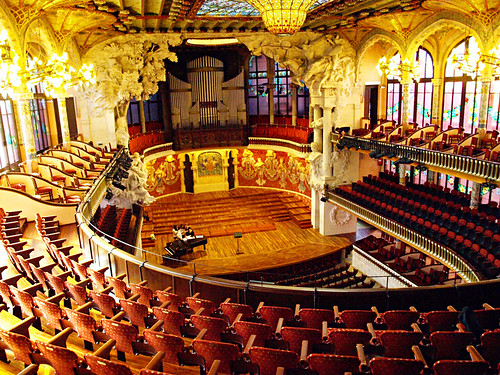
Another Lluis Domenéch i Montaner design, the Palau de la Música Catalana is his crowning glory, epitomising the most sumptuous of Modernisme designs – a brick and steel frame decorated by ceramics, stained glass and sculptures galore. It is theatrical in the extreme with intricate detail throughout; each of the 18 muses sharing the stage with oppressive German organ pipes hold a different instrument. The Palau’s airy, atmopsheric bar is good for a coffee and pastry break.
San Pere més alt; +34 93 295 72 08; tours every hour between 10am and 6pm; €12 (adults); www.palaumusica.cat
Casa Amatller
One of the ‘residents’ of the ‘block of discord’, so named because of the presence of buildings by four of the most renowned Catalan architects of the time (Doménech, Gaudí, Puig and Sagnier). Visitors to this section of Passeig de Grácia are supposed to choose the ‘golden apple’ by saying which they prefer. Gaudí’s Casa Batlló is probably hands down favourite but Josep Puig i Cadafalch’s Cas Amatller next door reveals a subtle wit. Look for ‘modern’ touches like gramophones, light bulbs and cameras in the hands of the ancient sculpted figures.
Passeig de Gràcia, 41; + 34 932 160 175; open Monday to Friday mornings and also Tuesday and Thursday afternoons; entrance €10; www.amatller.com
Casa Batlló
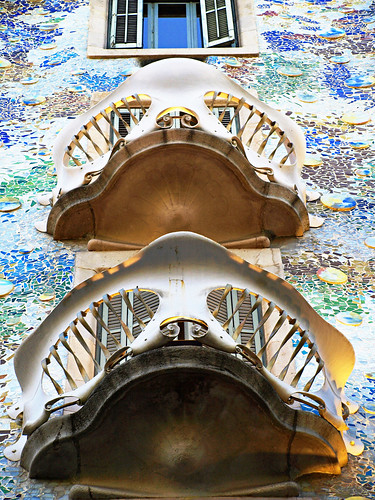
Many people´s favourite Gaudí building, Casa Batlló is a wonderful example of over the top Modernisme; an architectural genius given free rein. Does its whimsical designs represent the spirit of carnival? Or does it signify the sea and rolling waves? It’s also been suggested that its façade references Barcelona’s patron saint, St George and his epic battle with the dragon. Whatever Casa Batlló is meant to represent, there’s no denying its hypnotic and flamboyant beauty.
Passeig de Gràcia, 43; 34 93 216 03 06; open daily from 9am to 8pm; entrance €18.15; www.casabatllo.es
Casa Milla (La Pedrera)
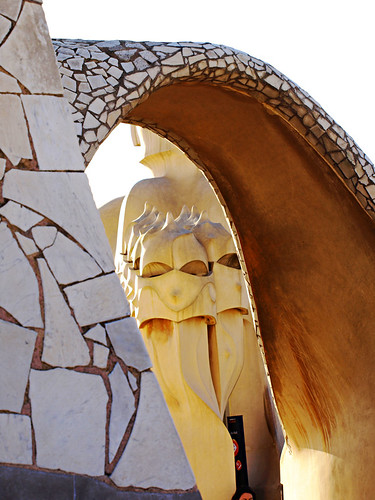
After Casa Batlló, La Pedrera (the quarry) seems quite tame. The rooftop maze of helmets resembling Ancient Greek warriors’ helmets are fun to explore and look resplendent when turned golden by the setting sun. But Casa Milla can’t quite escape its residential building origins and therein lies its problem. Gaudí wanted its inhabitants to bring colour and life to Casa Milla… but now only one family remain and the building is owned by a financial institution. Two interesting snippets about La Pedrera are that it was the site of the first basement car park in Spain and if an earthquake caused the façade to collapse, the building would stay put as the interior structure is separate from its façade.
Provença, 261-265; +34 902 400 973; open 9am to 6pm daily; entrance €15
Sagrada Família

The famous unfinished Gaudí, Barcelona’s great Gothic church, was started in 1882 and seems destined to have unsightly cranes towering above it for eternity. Surprisingly Gaudí wasn’t involved at the beginning of the Sagrada Família project, he took over the reins about a year into the project before spending 43 years of his life watching his masterpiece take shape…slowly. If that seems an excessive amount of time, in the Middle Ages it could take 200 years to build a church. By my reckoning that gives Barcelona another 70 years to complete the Sagrada Família before the church building deadline.
Mallorca, 401; +34 93 207 30 31; open 9am to 6pm (8pm in summer months) daily; entrance €13; www.sagradafamilia.cat
Buzz Trips was exposed to a healthy dose of Modernisme as a guest of Catalunya Tourist Board and in the company of passionate and learned guides provided by Turisme de Barcelona. A juicy range of themed Barcelona tours can be purchased via Turisme de Barcelona’s online BCN shop.




Be the first to comment